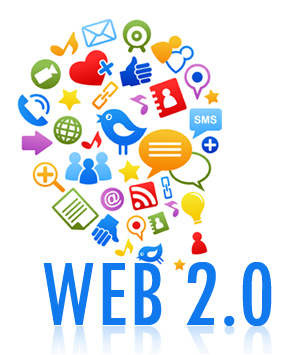Web2.0 - HTML5 & CSS3
HTML5 introduces many cutting-edge features that enable developers to create apps and websites with the functionality, speed, performance, and experience of desktop applications. HTML5 accelerates the pace of your innovation and enables you to seamlessly roll out your latest work to all your users simultaneously.HTML5
 HTML5 includes the fifth revision of the HTML markup language, CSS3, and a series of JavaScript APIs. Together, these technologies enable you to create complex applications that previously could be created only for desktop platforms.
HTML5 includes the fifth revision of the HTML markup language, CSS3, and a series of JavaScript APIs. Together, these technologies enable you to create complex applications that previously could be created only for desktop platforms.
Fast. Secure. Responsive. Interactive. Stunningly beautiful. These are words that were not associated with the web until HTML5. HTML5 introduces a broad set of new technologies, includeing:
- New HTML elements
- Geolocation APIs
- Drag and drop APIs
- Local data APIs
- Forms 2.0
- Video and audio support
- SVG and CANVAS graphics
- CSS3
- Two and 3 dimensional animation
- JavaScript 2.0
We provide a range of web designing services, web development services, e-Business solutions and internet solutions from basic designing solutions to more complex internet solutions.
Web 2.0
 Web 2.0 websites allow users to do more than just retrieve information. By increasing what was already possible in "Web 1.0", they provide the user with more user-interface, software and storage facilities, all through their browser. This has been called "network as platform" computing. A Web 2.0 site may allow users to interact and collaborate with each other in a social media dialogue as creators of user-generated content in a virtual community, in contrast to websites where people are limited to the passive viewing of content. Examples of Web 2.0 include social networking sites, FACEBOOK, TWITTER, LINKDID etc…
Web 2.0 websites allow users to do more than just retrieve information. By increasing what was already possible in "Web 1.0", they provide the user with more user-interface, software and storage facilities, all through their browser. This has been called "network as platform" computing. A Web 2.0 site may allow users to interact and collaborate with each other in a social media dialogue as creators of user-generated content in a virtual community, in contrast to websites where people are limited to the passive viewing of content. Examples of Web 2.0 include social networking sites, FACEBOOK, TWITTER, LINKDID etc…
Web2.0 Application and Solution with HTML5
The Challenge with today’s web is that is not the same place created in the 1990s. The W3C tries addressing the evolution of the HTML standard with a new updated standard called XHTML 2.0. The contributing vendors did not warmly accept the technology standard and a subsequent standard, HTML5, developed by the web Hypertext Application technology Working group (WHATWG), now in active development. The result is XHTML 2.0 has died on the vine, and all of the major technology companies, including Microsoft are pledging to support HTML5.
New Web browsers (Apple’s Safari, Opera Web Browser, Google’s Chrome, and Mozilla Fire Fox) and new web-enabled devices (Apple’s iPhone, Google’s Android, Palm’s Pre, and RIM’s BlackBerry) are pushing what can be done on the Web. Each of these competitive companies agrees on one thing: HTML5 is the next standard, and they are already supporting it. So HTML5 is nothing but solutions for next generation.
